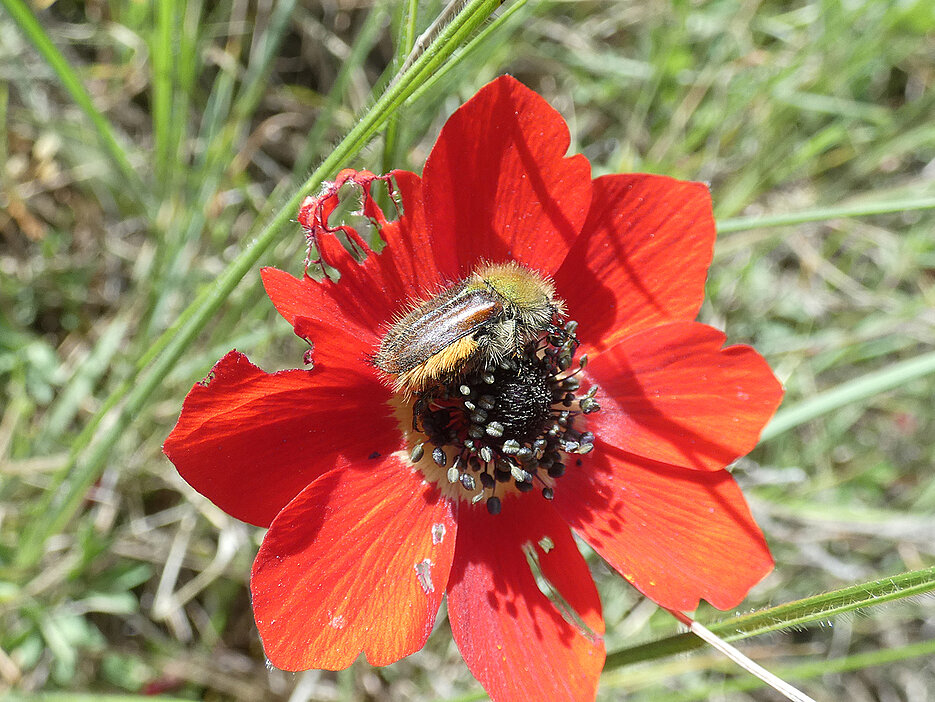Hardly any insects can see the colour red. However, two beetle species from the Mediterranean region are an exception, as an international research team has discovered.

Insect eyes are generally sensitive to ultraviolet, blue and green light. With the exception of some butterflies, they cannot see the colour red. Nevertheless, bees and other insects are also attracted to red flowers such as poppies. In this case, however, they are not attracted by the red colour, but because they recognise the UV light reflected by the poppy flower.
However, two beetle species from the eastern Mediterranean region can indeed perceive the colour red, as an international research team was able to show. The beetles are Pygopleurus chrysonotus and Pygopleurus syriacus from the family Glaphyridae. They feed mainly on pollen and prefer to visit plants with red flowers, such as poppies, anemones and buttercups.
Beetles Have Photoreceptors for long-wave Light
'To our knowledge, we are the first to have experimentally demonstrated that beetles can actually perceive the colour red,' says Dr Johannes Spaethe from the Chair of Zoology II at the Biocentre of Julius-Maximilians-Universität (JMU) Würzburg in Bavaria, Germany. He gained the new insights together with Dr Elena Bencúrová from the Würzburg Bioinformatics Chair and researchers from the Universities of Ljubljana (Slovenia) and Groningen (Netherlands). The study has been published in the Journal of Experimental Biology.
The scientists used electrophysiology, behavioural experiments and colour trapping. Among other things, they found that the two Mediterranean beetles possess four types of photoreceptors in their retinas that respond to UV light as well as blue, green and deep red light. Field experiments also showed that the animals use true colour vision to identify red targets and that they have a clear preference for red colours.
New Model System for Ecological and Evolutionary Questions
The researchers consider the Glaphyrid family to be a promising new model system for investigating the visual ecology of beetles and the evolution of flower signals and flower detection by pollinators.
'The prevailing opinion in science is that flower colours have adapted to the visual systems of pollinators over the course of evolution,' says Johannes Spaethe. However, based on the new findings, it is now possible to speculate whether this evolutionary scenario also applies to Glaphyrid beetles and the flowers they visit.
Why do the researchers think this? The three genera of this beetle family (Eulasia, Glaphyrus and Pygopleurus) show considerable differences in their preferences for flower colours, which vary between red, violet, white and yellow. This suggests that the physiological and/or behavioural basis for seeing red and other colours is relatively labile.
The great variety of flower colours in the Mediterranean region and the considerable variation in the colour preferences of the beetles made it plausible that the visual systems of these pollinators may adapt to flower colours than is commonly assumed.
Publication
Gregor Belušič, Sander B. de Hoop, Elena Bencúrová, Domen Lazar, Johannes Spaethe, Casper J. van der Kooi: Remarkable red colour vision in two Mediterranean beetle pollinators. Journal of Experimental Biology, 9 June 2025, DOI: 10.1242/jeb.250181






